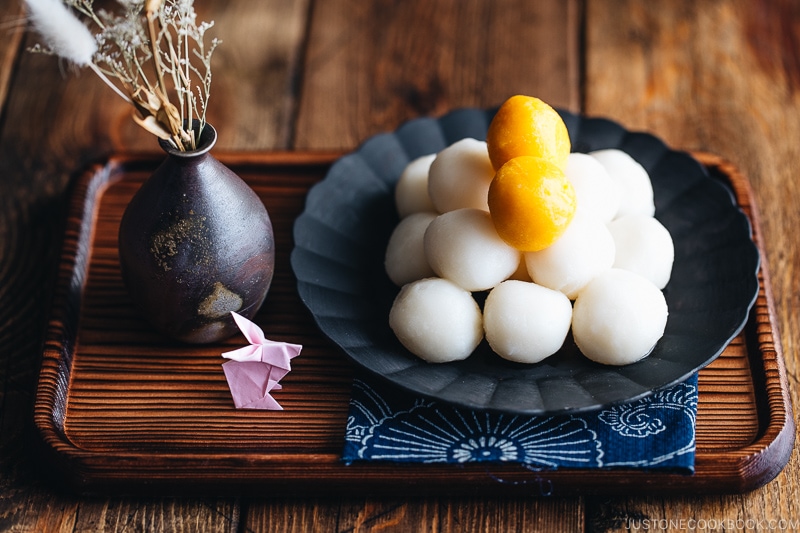
In mid-autumn, under the full moon, the Japanese come together to celebrate Tsukimi – Japanese Harvest Moon Festival. They enjoy fall treats like dango and chestnuts, as well as mochi in the shape of rabbits. Learn more about this traditional custom of Japanese moon-viewing and experience it in your own backyard.
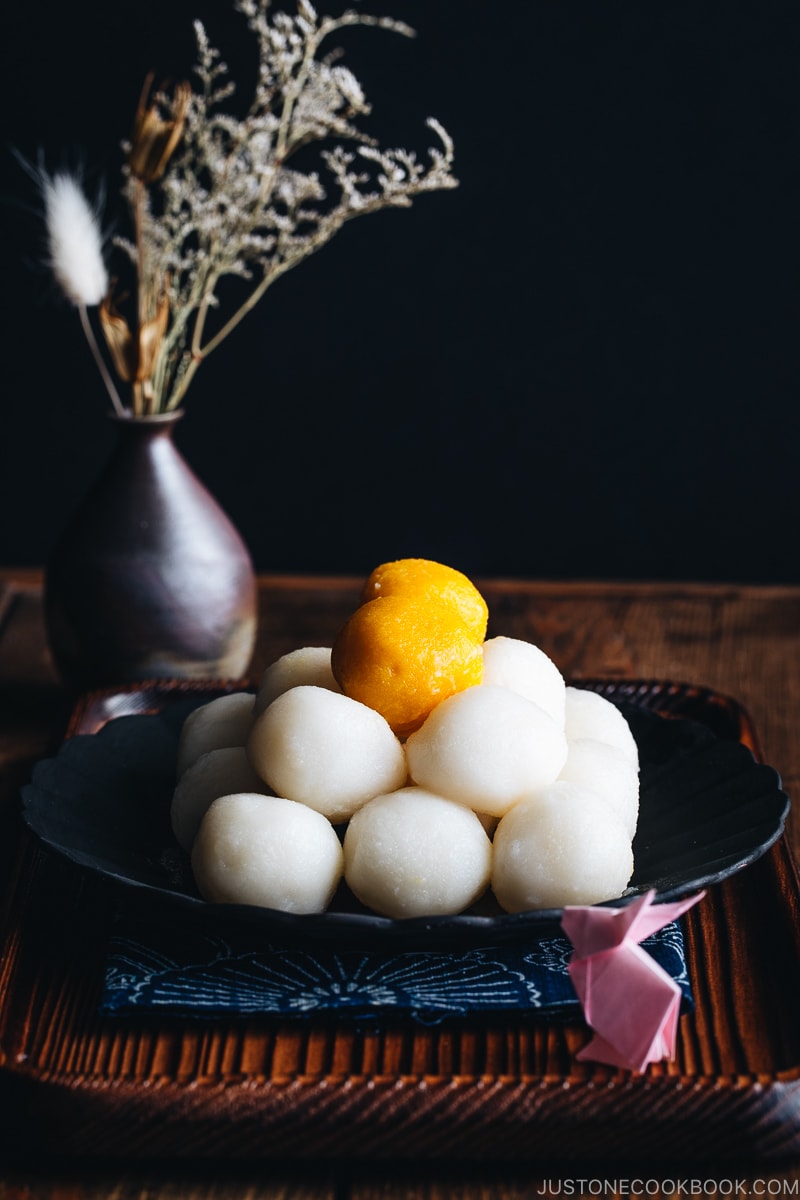
When you finally feel the cool breeze in the early morning and evening after spending the long muggy summer days, the Harvest Moon will shortly follow. Rising at sunset on the horizon, this special full moon appears larger and more colorful. In Japan, this is the time of year when families gather together to celebrate the harvest and to take wonder in the passing of seasons during a festival called Tsukimi (月見) or Otsukimi (お月見) (the honorific term). It is also referred to as Chushu no Meigetu (中秋の名月), the Harvest Moon Festival or Mid-Autumn Festival.
This Japanese custom of moon viewing is a contemplative moment of giving thanks and to celebrate the seasonal beauty of nature. As the full moon has a mysterious enigma that invokes a sense of longing, Tsukimi is a poetic and solemn affair.
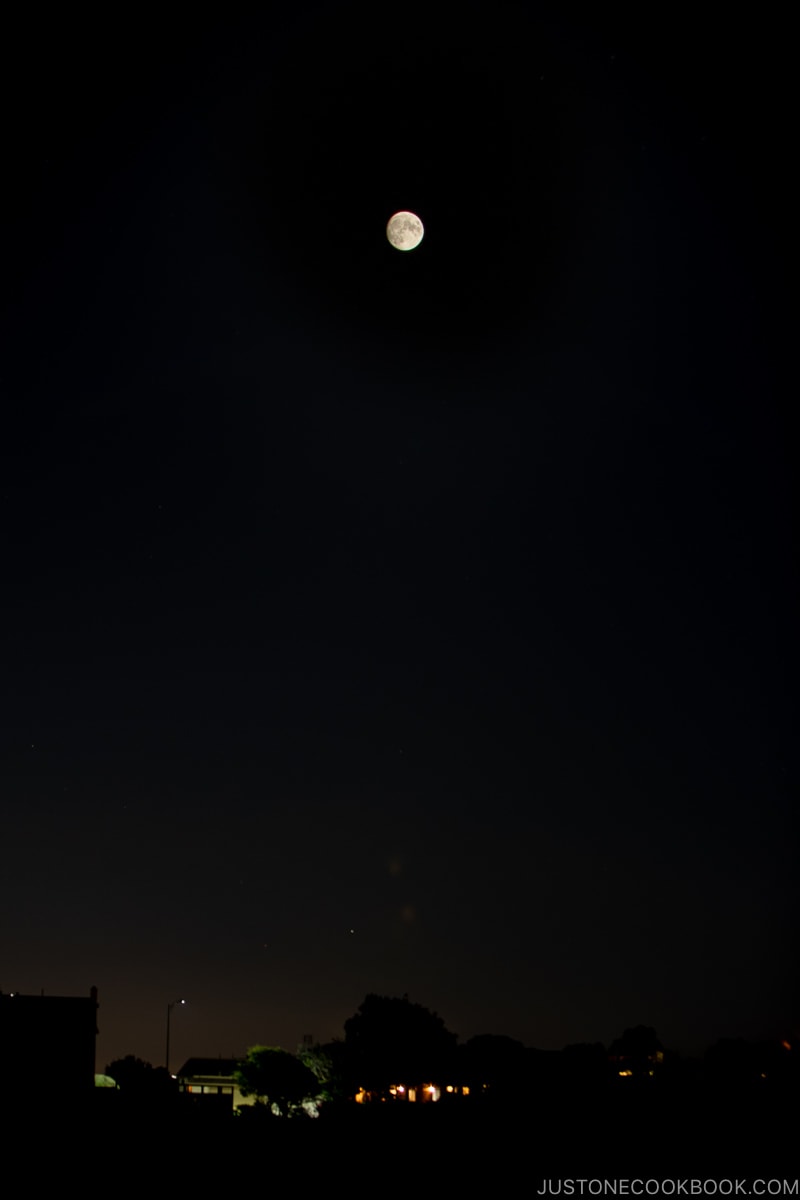
Origin of Tsukimi
Like many of Japan’s festivals, the tradition of Tsukimi is said to date back to the Nara period (710-794), when it was introduced from China. However, it was only during the Heian era (794-1185) the celebration took effect. Court nobles celebrated the moon-viewing by indulging in elaborated banquets by the ponds, music performance and poetry recitals dedicated to the moon.
The custom evolved during the Edo period (1603-1868), where farmers took on the celebration as harvest festivals as an expression to give thanks to Mother Nature.
Similar to the Mid-Autumn Festival in China, you’ll see a lot of rabbit images being depicted at items associated with Tsukimi. People believe that rabbits are dwellers of the moon. It is said that if you look closely at the face of the moon, you would see the shape of a rabbit pounding mochi (rice cakes) with a wooden mallet and mortar.
How Do the Japanese Celebrate Tsukimi?
The celebration of the moon-viewing festival typically takes place on the 15th day of the eighth month of the lunar calendar. Also referred to as Jugoya (十五夜) in Japanese, the date for Tsukimi changes every year but usually falls in mid-September or early October on the modern solar calendar.
These days the deep connotations of moon viewing remain, even though many of the traditions have been adapted to modern customs. It is the time to reflect, to give thanks and to pray for good health. Many temples and shrines throughout Japan celebrate the Tsukimi event with performances such as traditional dances and poetry recitals from the Heian era.
In most Japanese homes, Tsukimi is celebrated in a much more humble manner. People would arrange ornaments and decorations such as pampas grass (susuki), bush clover (hagi) and autumnal flowers near windows from which the moon can be seen. Rice dumplings (Tsukimi Dango), persimmons, chestnuts, grapes, and pears are arranged on the south-facing veranda, so the meals can be shared with the lunar god.

Tsukimi Foods
When comes to the celebration of festivals in Japan, there will be food. Known as Tsukimi dishes or Tsukimi Ryōri (月見料理), you will find seasonal foods and other special dishes that ignite images of the full moon. These dishes are usually full of symbolism and considered good luck to eat. Here are just a few foods that you will see during the moon-viewing festival:
Tsukimi Dango
Tsukimi Dango (月見団子) is the most traditional food associated with Tsukimi. They are small, round, white dumplings made of rice. Unlike Mitarashi Dango which are served in skewers and seasoned with a sweet-savory sauce, Tsunami Dango are plain. There is even a special way to display fifteen rice dumplings where they are stacked high in a pyramid arrangement on a tray (See my recipe).
Mochi in the Shape of Rabbits
Mochi (sticky rice cake) is another traditional food that holds a special place in Tsukimi. They are made in the shape of rabbits because the craters of the moon look like the imagery of a rabbit pounding mochi.
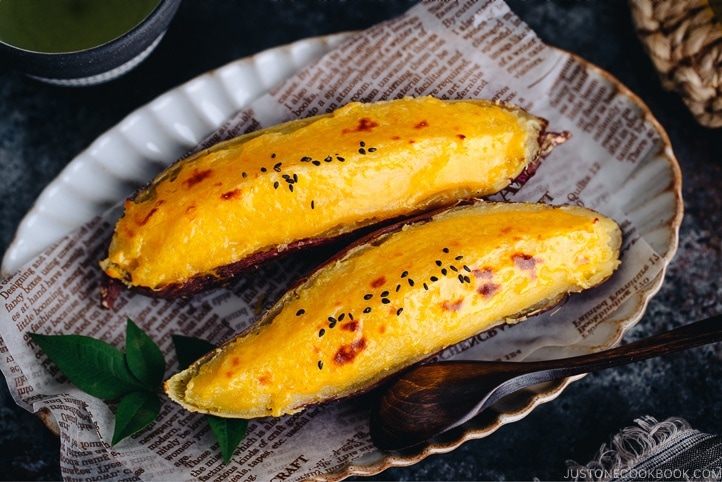
Fall Fruits and Vegetables
The Japanese have always placed an emphasis on seasonal eating, so it makes sense to enjoy what the season brings forth during Tsukimi. You can find chestnuts (kuri), kabocha (Japanese pumpkin), persimmons, Japanese sweet potatoes, taro, grapes and pears and so on being served as an offering to the moon and for enjoyment afterward.
Raw Egg Dishes
Another highlight you’ll find is dishes with a raw egg or over-easy egg on top. Some noodle restaurants in Japan would serve up Tsukimi Soba (月見そば) and Tsukimi udon (月見うどん) topped with an additional egg. The rich yellow of the egg yolk resembles the brightest full moon.
Tsukimi Burger
The Japanese have an inclination of mixing the old and the new in their way of life. So, it is no surprise to see a Tsunami Burger on the menu during the Tsukimi season. It’s basically a burger with a sunny-side-up egg in the middle. Eggs symbolize the moon. And the Japanese love them! Even McDonald’s and other large food chains in Japan take advantage of this by serving up hamburgers and other food items featuring eggs.
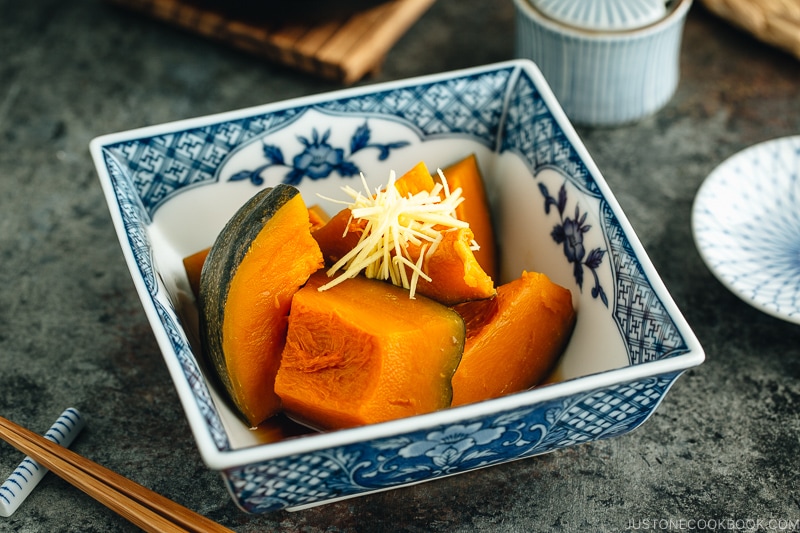
Celebrating Tsukimi in Japan or in Your Own Home
If you are in Japan during Tsukimi, you may want to check out a few temples or shrines that offer moon-viewing activities. Some famous gardens even offer boat rides where you can enjoy the moon shimmering on the water. It’s a romantic way to experience Tsukimi as you slow down and reflect on the passing year.
In the US, some botanical gardens or arboretums with Japanese gardens may also host annual moon-viewing events for visitors. So don’t forget to look up their event calendars!
Back in your home, you can celebrate Tsukimi by incorporating some of these rituals. Make it a fun evening by having a family picnic by the lake and marvel at the beauty of the moon. Or invite some friends over for a moon-viewing party while enjoying some delicious fall snacks together. While you’re gazing up, see if you can spot the rabbits pounding their rice cakes!
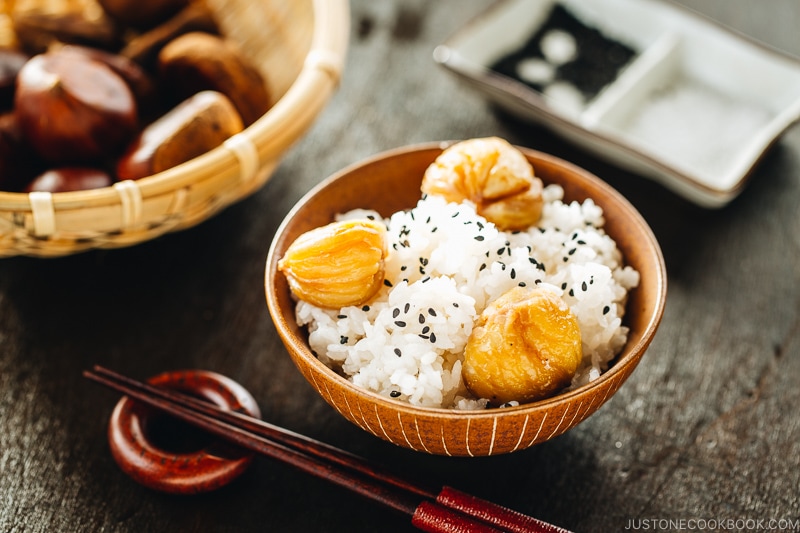
Japanese Chestnut Rice (Kuri Gohan)

Originally from Penang, Malaysia, Reese lives in Minnesota with her husband and their baby boy. She previously ran an Asian spice shop, and also worked on UNESCO Heritage projects in Penang in the areas of performing arts, history, and arts education. Reese loves spending time with her family, listening to podcasts, and reading up on art & design. And of course, dreaming of another trip to Japan to hike mountain trails and eat her favorite street food Okonomiyaki. More from Reese →